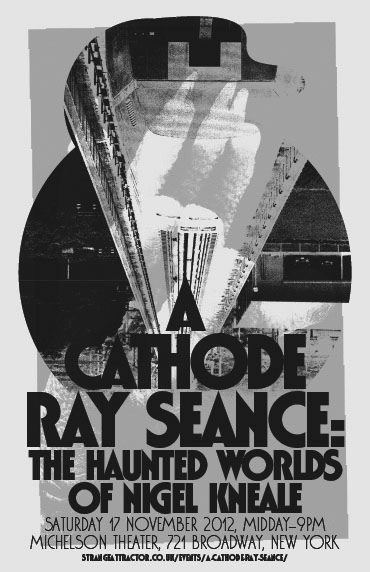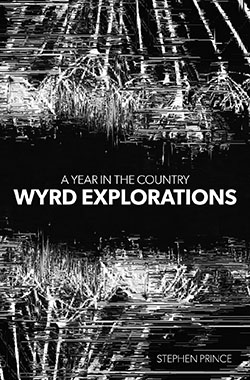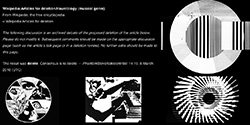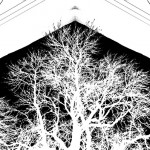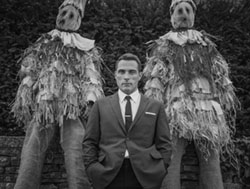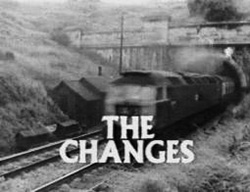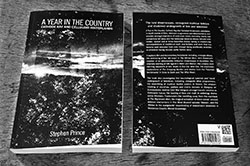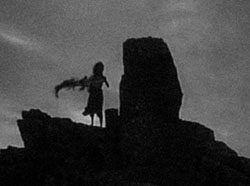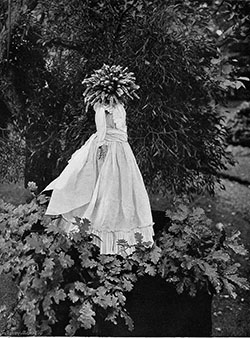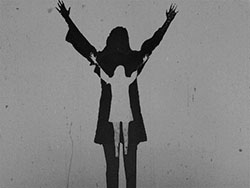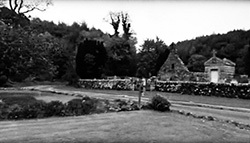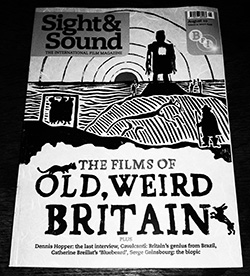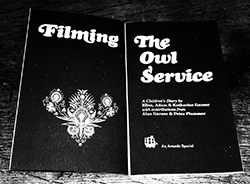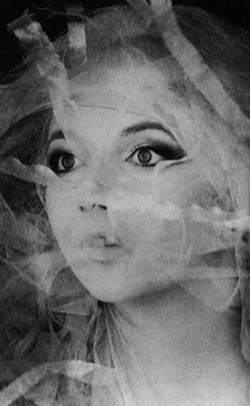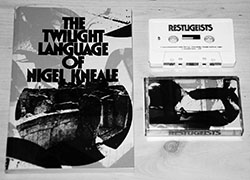
The Twilight Language of Nigel Kneale was published by Texte und Töne to accompany a one-day event in New York called A Cathode Ray Séance: The Haunted Worlds of Nigel Kneale, which took place in 2012 and was organised by the Colloquium for Unpopular Culture and Mark Pilkington of the fringe culture publisher Strange Attractor.
Nigel Kneale was a British screenwriter who wrote prof- essionally for more than 50 years and whose work has gained considerable cult and popular success and is considered highly influential on contemporary work. He is probably best known for the creation of the character Professor Bernard Quatermass who featured in a number of popular television series and films,14 and his output often comprised of thrillers that used science fiction and horror elements, although he also wrote the 1959 film adaptation of John Osborne’s iconic angry young man play Look Back in Anger (1956).
Although often working within science fiction and the fringes of horror, Nigel Kneale’s work seems to explore and resonate beyond conventional genre expectations and restrictions, to create what writer and musician Dan Fox, in a piece on the A Cathode Ray Séance event in frieze magazine published in 2012 has called “a uniquely haunted form of science fiction” – one which drew from and connected with intriguing intertwined and multi-layered points of reference and:
“…fused the white heat of technology and broadcasting with rural occultism, and drove parapsychology headlong into Cold War fear. With their ominous BBC Radiophonic Workshop soundtracks and infusions of eldritch dread into the dreary landscapes of post-war Britain, Kneale’s screenplays – inheriting the restrained malevolence of ghost story writer M.R. James – have exerted a strong influence over a number of musicians and writers, not to mention those like myself who were terminally spooked by re-runs of his work, stumbled across as a kid on rainy Saturday afternoons spent in front of the TV. Pink Floyd, Stanley Kubrick, Steven Spielberg, John Carpenter, Patrick Keiller, Chris Carter (who originally approached Kneale to write The X-Files), Broadcast, the Ghost Box record label, The League of Gentlemen, China Miéville and Mark Fisher have all cited Kneale as an influence on their work, and in recent years his work has also become a touchstone for hauntology.” (Quoted from the above-mentioned article in frieze.)
The Twilight Language of Nigel Kneale comprises of a set of essays, conversations etc, produced in response to Nigel Kneale’s work and features contributions from Sophia Al-Maria, Bilge Ebiri, Mark Fisher, William Fowler, Ken Hollings, Paolo Javier, Roger Luckhurst, China Miéville, Drew Mulholland, David Pike, Mark Pilkington, Joanna Ruocco, Sukhdev Sandhu, Dave Tompkins, Michael Vazquez and Evan Calder Williams.
It also came with a cassette tape featuring specially composed work from The Asterism, Emma Hammond, Hong Kong In The 60s, Listening Center, The Real Tuesday Weld, Mordant Music and Robin The Fog (aka Howlround) – a number of whom have since come to be associated with hauntology.
The A Cathode Ray Séance event included screenings of work written by Nigel Kneale including The Stone Tape (1972), Murrain, an episode of Beasts (1976), Quatermass and the Pit (1967), a multimedia performance of his lost work The Road (1963) and a panel discussion. The latter of these, as reported by Dan Fox in his above-mentioned article on the event for frieze, drew comparisons between Nigel Kneale’s work and Rod Sterling’s American produced fantasy science fiction horror anthology television series The Twilight Zone (1959-1964) and articulated its similar concerns with science and the paranormal; although Kneale’s work is possibly more “out there” and exploratory, both can be seen as examples of when mainstream genre television pushes back against sometimes strictly defined expectations and limitations, to produce thought-provoking, intelligent work while still maintaining broad accessibility.
In the above article Fox also wrote that America and Britain’s differing relationships to landscape and history suggests one reason why Nigel Kneale’s screenplays had a particular force in Britain that could not be mapped onto the American experience. The relatively compact and layered history of Britain has led to a vertical, stacked sense of the past in which modern housing developments were erected alongside Victorian terraces, medieval castles were founded on Roman ruins and nuclear submarines were submerged in ancient lochs. By contrast it was noted that the vast scale of the US has resulted in a more horizontally spread sense of the past and so the experience of history is not always found to be one of more extreme juxtapositions:
“Arguably, Kneale’s writing is less about hauntings in the paranormal sense, than being haunted by history; by aggregations of belief and technology built over centuries that give ragged, uneven contours to our present landscapes.”
The pieces produced for The Twilight Language of Nigel Kneale take an eclectic and varied approach to their subject matter and include amongst other chapters:
1. Roger Luckhurst’s piece which in part takes in an examination of parapsychology in the 1970s.
2. Drew Mulholland’s discussion of discovering Quatermass in his youth within a cultural milieu that included English classical composer Holst, tape loops, ghosts, space, memory and telepathic insects from Mars and how it lead to the esoteric techniques which produced some of the sounds on his Quatermass-inspired album Séance at Hobs Lane (2001).
3. Ken Hollings’ intertwining of the space race and the electronic music explorations of the BBC Radiophonic Workshop and others such as Brian Eno, Hawkwind and Cabaret Voltaire.
4. William Fowler’s examination of Nigel Kneale’s curious foray into comedy with the series Kinvig (1981).
5. Sophia Al-Maria’s notes, stills and script of an imaginary lost and now found series of Quatermass.
6. An enigmatic piece of fantasy orientated fiction by Mark Pilkington that appears in part to be rooted in imaginary British history and the early optimistic days of post-war development.
7. China Miéville and Michael C. Vasquez’s conversation on Nigel Kneale that becomes a freeform almost psychogeographic wandering and takes in Sapphire & Steel (1979-1982), Ghost Box Records, Doctor Who (old and new), M.R. James’ ghost stories, J.G. Ballard, zombies and the literal crawling of a bug across the screen in a recording of The Quatermass Experiment (1953) due to it being recorded by a film camera being pointed at a monitor that was playing the live broadcast.
The eclectic and multidisciplinary nature of the work that has been produced and its themes could be considered an expression of the earlier-mentioned way in which a relatively small core of 1960s and 1970s British film and television, that has come to be connected with wyrd culture and hauntology, continues to inspire a wide range of responses and contemporary creative output.



